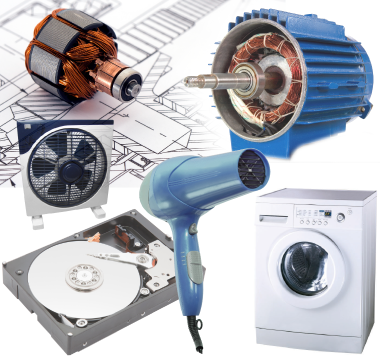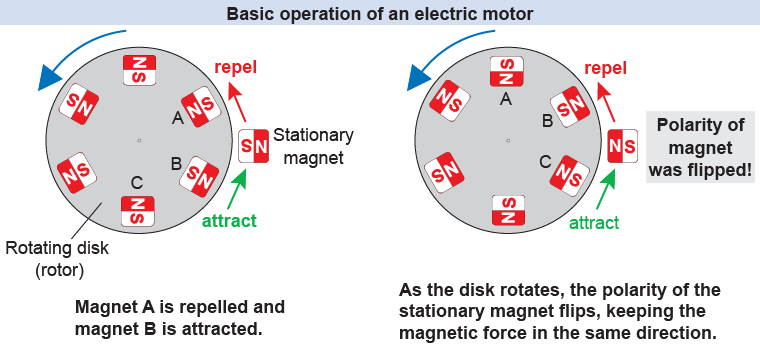|
 The electric motor is a device that uses electricity and magnets to transform electrical energy into mechanical energy. This transformation of energy helped revolutionize human technology. Today, electric motors are everywhere and they range in size from the fingernail-sized motor that makes your cellphone vibrate to the room-sized motors used in factories and locomotives. Recently, scientists have developed motors that are as thin as a human hair! These tiny motors are called nanomotors and will some day find medical and other applications.
The electric motor is a device that uses electricity and magnets to transform electrical energy into mechanical energy. This transformation of energy helped revolutionize human technology. Today, electric motors are everywhere and they range in size from the fingernail-sized motor that makes your cellphone vibrate to the room-sized motors used in factories and locomotives. Recently, scientists have developed motors that are as thin as a human hair! These tiny motors are called nanomotors and will some day find medical and other applications. 
|
Electric motors operate through the generation of attractive and repulsive forces between magnets. Those forces are controlled so that they always point in the direction of rotation. As a rotating magnet approaches the stationary magnet, the two magnets must have opposite poles to create an attractive magnetic force. As the magnets pass each other, they now must exert a repulsive magnetic force from similar poles to push them apart. The only way to accomplish this attraction and repulsion is if one of the two magnets—either on the rotor or the stationary magnet—periodically flips its polarity between north to south! At least one set of magnets must be electromagnets so that it can be electrically controlled to flip its polarity. 
|

|
The polarity of the stationary magnet must be reversed when the rotating magnets are in the right position. If the reversal of the polarity does not occur at the right time, the motor is not very efficient in converting electrical energy to mechanical energy. An efficient motor requires precise synchronization between the switching of the magnet polarity and the passage of each rotating magnet. 
|
Why do the magnets on the rotating disk of a motor have alternate poles?
 |
At first, the stationary magnet attracts the magnet below it and repels the one above it. Once the magnet below it rotates far enough, the polarity of the stationary magnet changes so that the disk keeps rotating. If the rotating magnets didn’t alternate poles, then the disk would rotate until one of its magnets lined up with the stationary magnet and then stop. 
|

